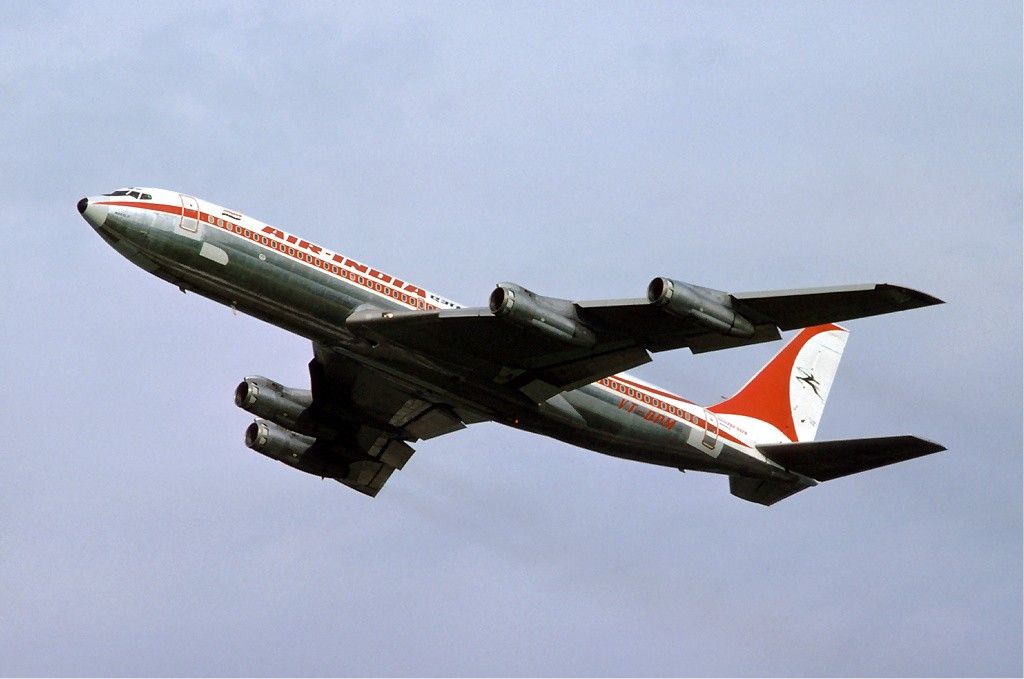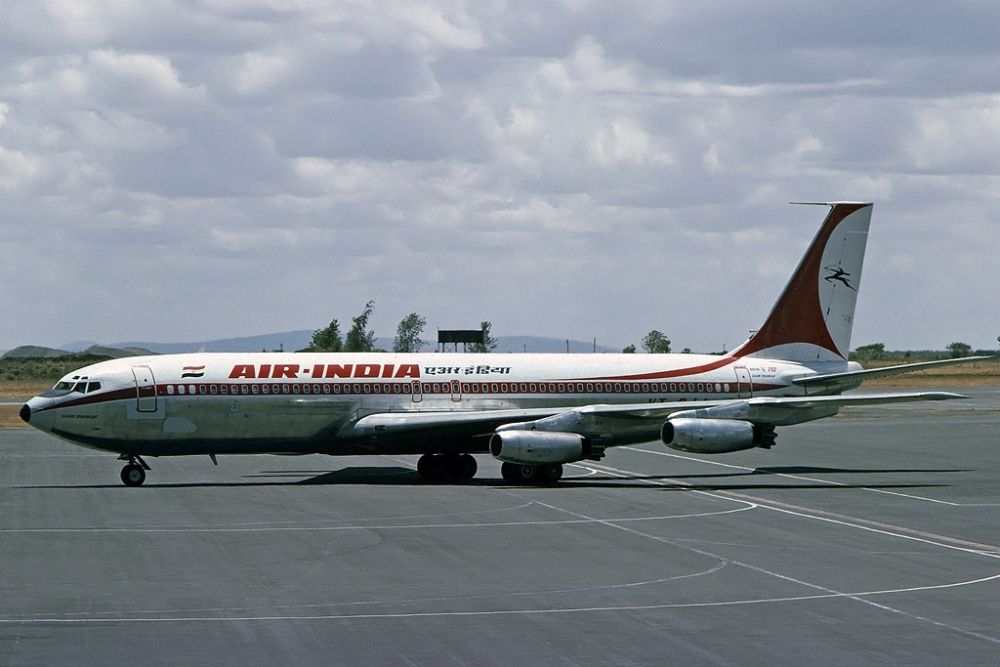The pairing of Air India and Boeing 707 was one of the most successful of its time. One was a highly respected airline known for its hospitality and onboard services; the other was an aircraft often credited with ushering in the era of the jet age in the truest sense. Both complemented each other perfectly and together developed into a formidable force in the aviation world.
Origins
Before Boeing, the UK, France, and Russia had developed their own jet-powered civilian planes, but none could mainstream jet travel the way 707 did. The British de Havilland Comet created buzz when it first flew in 1952, but the airplane’s structural problems quickly dented its reputation.
The Boeing 707 entered commercial service in 1958 with Pan Am, flying from New York to Paris with a refueling stopover in Gander, Canada. Within two years, the narrowbody quadjet revolutionized air travel. Although initially intended for medium-range flying, the 707 soon became the aircraft of choice for cross-Atlantic and continental flights. Boeing produced further 707 variants and even custom-designed the airplane for many customers, further consolidating its position throughout the 1960s.
By this time, Air India was also emerging as an airline of repute. Founded by well-known businessman JRD Tata, the carrier started as Tata Air Services, flying mails around Karachi and Bombay. As it grew over the years, the carrier rebranded itself as Tata Airlines and started flying passengers and cargo.
After World War II, the airline became a public limited company and was renamed Air India Limited. In 1953, the carrier was fully nationalized, but JRD Tata remained its chairman until 1977.
Hear from aviation’s movers and shakers. Book your free ticket for the Future Flying Forum!
Air India enters jet age with 707
Air India received the delivery of its first Boeing 707 named Gauri Shankar in 1960. Before that, the carrier used the Lockheed Constellation series of airplanes on its international routes to places like London, Geneva, and Cairo.
With the 707 in its fleet, Air India became the first Asian airline to enter the jet age and by 1962, had become the first carrier in the world to operate an all-jet fleet.
The 707 complemented Air India’s growing ambitions tremendously. Faraway destinations, which until then were out of reach, soon became a reality. On May 14th, 1960, Air India flew to New York City for the first time using the jetliner, becoming the first Asian airline to operate a transatlantic flight.
Soon, the airline featured the 707 in its advertisements, boasting several key destinations, including Sydney, Australia. The aircraft helped the airline become bolder in its approach to route planning and paved the way for the bigger 747 jumbo to consolidate its position as a premium carrier in the next few years.
Accidents
While Air India certainly benefitted from the 707, the aircraft’s operational history with the carrier is also dented by two accidents.
In January 1966, an Air India 707 crashed near the summit of Mont Blanc in the Alps. The plane was on a regular Bombay to New York flight when it went down, killing all 117 onboard.
The second accident involved the very first 707 delivered to the carrier – Gauri Shankar. In June 1982, the airplane was on a scheduled service between Kuala Lumpur and Bombay, with stopovers in Singapore and Madras. Due to bad weather, it skidded off the runway in Bombay, killing 17 people onboard.
Over the next few decades, Air India went through significant ups and downs, with the last few years particularly turbulent for the carrier. With the airline now back with the Tatas, everyone is hoping for it to recreate its glory days of the ‘60s and ’70, of which the Boeing 707 was an important chapter.


